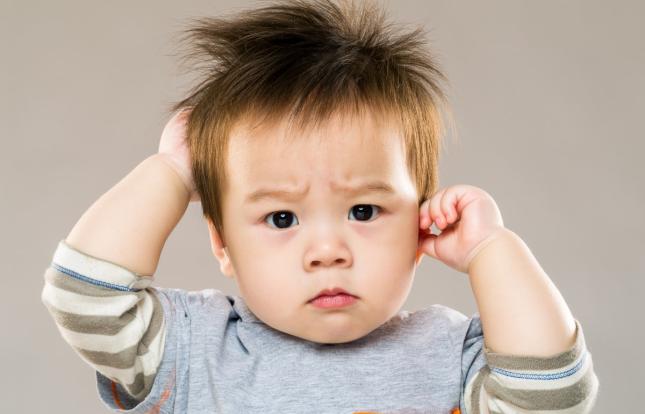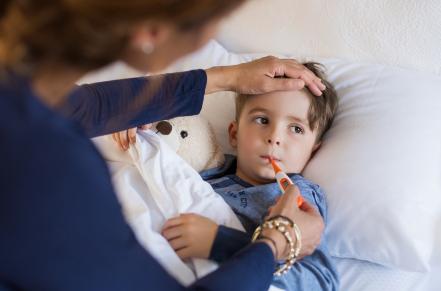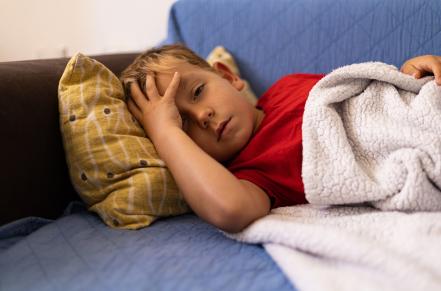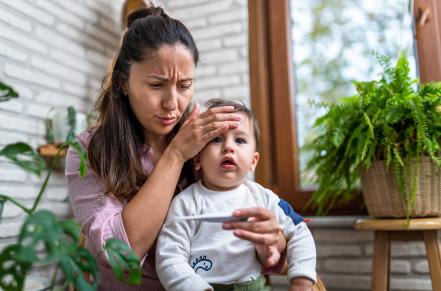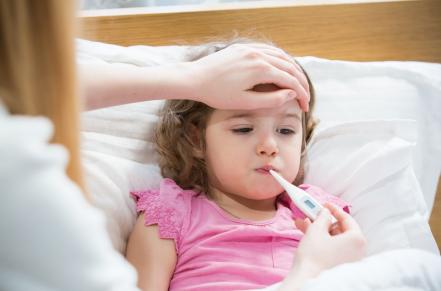What is otitis media (a middle ear infection)?
Otitis media is an ear infection in the middle part of the ear, behind the eardrum. The infection usually happens during or after a respiratory illness like a cold or flu.
Who gets middle ear infections and how?
Middle ear infections are common in children 6 years old and younger. They are usually viral infections that grow in the children’s upper respiratory tract, in their nose and throat. The infection gets trapped, and fluid and mucus build up in the middle part of the ear. The fluid makes the eardrum swell and causes ear pain.
Middle ear infections are more common if children are:
- Between 6 months and 2 years old. Young children get many respiratory infections because their immune systems are developing. Children’s middle ear structures are small and do not drain well. Fluid builds up behind the eardrum more easily in children than in adults.
- Attending child care. Children in child care are regularly around viruses and bacteria that cause respiratory and middle ear infections. Some children get the infections more often than other children. This is not usually because of a specific child care program. Switching child care programs will not reduce a child’s ear infections.
- Exposed to smoke or air pollution. Tobacco smoke and air pollution may increase children’s chances of getting viral infections, increasing their chances of getting middle ear infections.
- Using pacifiers. Using pacifiers, especially after 6 months, may be related to getting ear infections. Pacifiers can increase saliva and open the ear structures. Viruses and bacteria can then travel from the nose and mouth to the ears.
What are the symptoms of middle ear infections?
A child with a middle ear infection may:
- Have ear pain
- Pull on their ear
- Be irritable or cry
- Have a fever
- Have trouble sleeping or eating
- Vomit or have diarrhea
Sometimes the fluid in a child’s ear can build up and burst the eardrum. This causes fluid to drain out of a child’s ear. Seeing the fluid may be scary, but the eardrum will heal. The child may feel better because the ear pressure goes away.
Middle ear infections in older children usually last a couple of days. They can last longer in children under 2 years old since their ear canals do not drain easily. Having fluid in the ear for a long time can cause temporary hearing loss or persistent infections. It is important to see a health care provider. Middle ear infections do not usually cause long-term problems, but it is still important for a health care professional to check a child’s ears regularly.
Should children with middle ear infections stay at home?
Ear infections are not contagious, so children can usually go to child care with an ear infection. If a child with an ear infection is fussy, has a fever, and is in a lot of pain, contact the child’s health care provider. If the child is not able to participate in activities or requires more care than can be provided without impacting the care of the other children, the child should stay home.
Sometimes, the fluid in a child’s ear may stay there for months after the infection goes away. If the fluid does not go away on its own, a health care provider may suggest a special surgery. The procedure puts tubes in a child’s ear. The tubes help the fluid drain and can improve a child’s hearing.
Tips to reduce the risk of middle ear infections
Practicing healthy habits can prevent middle ear infections:
- Practice good hand washing.
- Teach children to cough into their elbow and away from people.
- Wipe noses with clean tissues, dispose of them properly, and then wash your hands.
- Do not allow children to share food, bottles, toothbrushes, eating utensils, drinking cups, or toys that can be put in the mouth.
- Support breastfeeding families. Breastfeeding helps build children’s immune systems.
- Stay up-to-date on vaccine recommendations from children’s health care provider.
- Follow the routine schedule for cleaning, sanitizing, and disinfecting in Caring for Our Children Appendix K to reduce the spread of infectious diseases.
More tips:
- Never put anything smaller than your finger, such as a cotton swab, into a child’s ear. Do not allow children to put things in their ears.
- Do not feed or bottle-feed infants lying on their backs. Never prop bottles while feeding.
- Watch for hearing or speech problems. They could happen with frequent, untreated, or undetected middle ear infections. Use the National Institute of Health’s Hearing and Communicative Development Checklist to check children’s average hearing development. A child should see a health care professional if there are any concerns about their hearing.
Where can I find more information?
- National Institutes of Health https://www.nidcd.nih.gov/health/your-babys-hearing-and-communicative-development-checklist
- American Academy of Pediatrics Ear Infection Today, Gone Tomorrow at https://www.healthychildren.org/English/health-issues/conditions/ear-nose-throat/Pages/Ear-Infection-Today-Gone-Tomorrow.aspx
Updated December 2023, UCSF California Childcare Health Program

